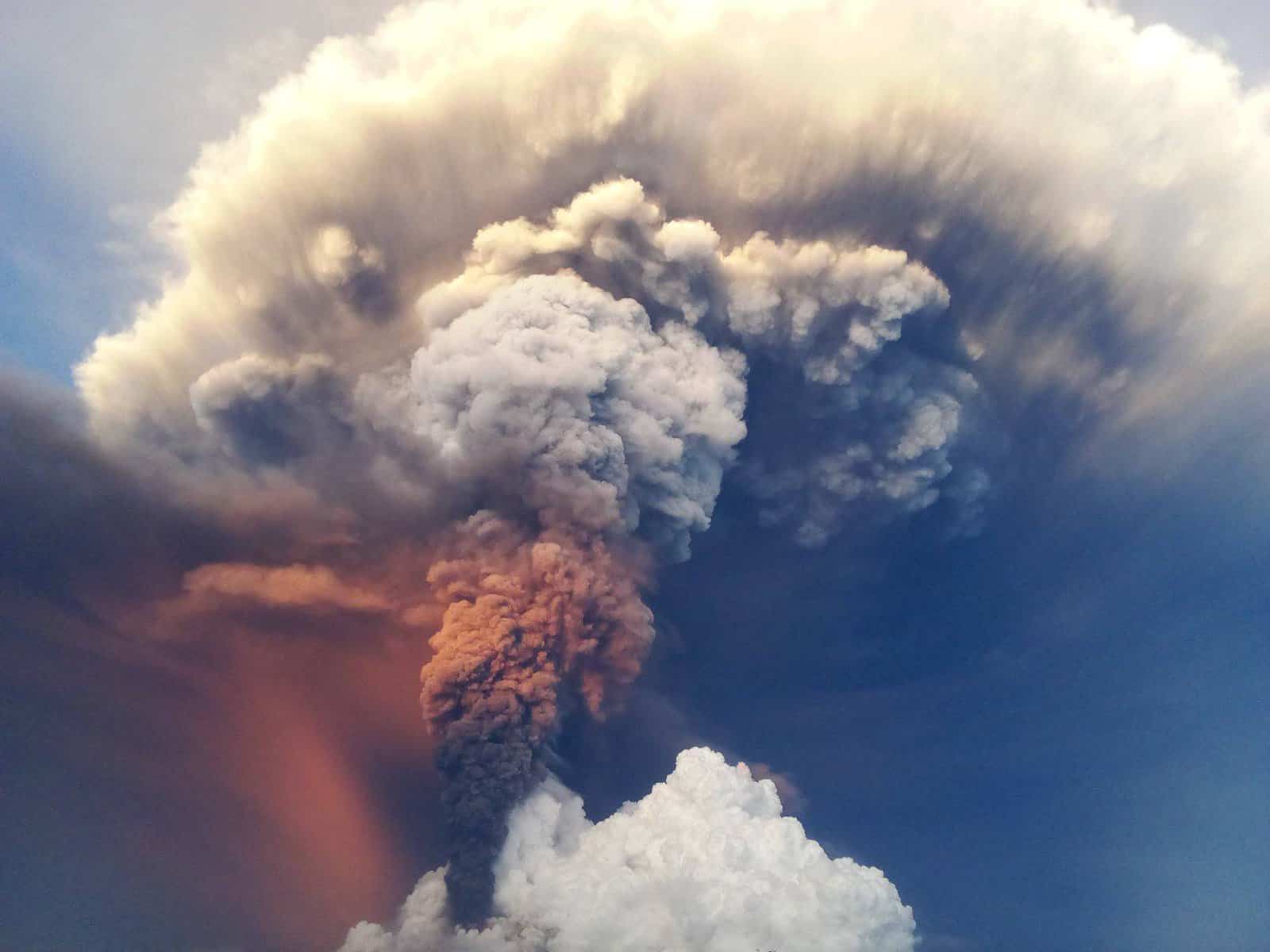A volcanic eruption in Papua New Guinea has forced the evacuation of more than 26,000 people over the past week and created urgent humanitarian needs, a disaster official said Tuesday.
Mudslides have followed the 20 November eruption of Mt. Ulawun in West New Britain, a province in an outlying island of Papua New Guinea, compounding difficulties for the region, the province’s acting director of disaster response, Clement Bailey, told BenarNews.
“The affected people are in dire need,” he said. Emergency food supplies have reached them, but they also need water tanks, torches, cooking equipment, sanitary pads and other goods, he said. The displaced people are staying at nine makeshift camps in West New Britain.
Ash has destroyed subsistence crops and weighed down the branches of palm oil trees so that they now eerily resemble the “Tumbuan” masked figures that represent spirits in West New Britain, said Chris Lagisa, chief of Ulamona village about 4 miles (6 kilometers) from the volcano.
Flights to the main provincial airport were canceled due to the build up of ash, according to Bailey. On Monday, a small plane landed after a test flight following a clean up effort, but the National Airports Corporation has yet to issue an update on the situation.
Papua New Guinea is prone to volcanic eruptions and earthquakes because of its location on the “Ring of Fire,” an arc of volcanoes and fault lines in the Pacific Ocean. The country of more than nine million people has about 40 active volcanoes.
Lagisa said locals were prepared for the possibility of an eruption because of an alert from Papua New Guinea’s Rabaul Volcano Observatory and there were no deaths or injuries.
Bells rang and people were evacuated with the help of trucks from a palm oil company. Ash fall covers a 15-kilometer (9-mile) radius from the volcano and has affected about 1,300 hectares (3,212 acres) of small-holder agriculture and 8,000 hectares of oil palm, he said.
“When the volcano erupted, ash spewed up into the skies and fell and covered trees and vegetation,” Lagisa said. “The weight of the ash and heat broke branches.”
The volcano’s alert level has been lowered, but the combination of rain and ash fall has resulted in giant mudflows on Mt. Ulawun, said Bailey. “It rained on Friday and Saturday at Ulamona, and we have reports of mudflow of 80 meters wide and 50 centimeters thick moving down Mt Ulawun with debris,” he said.
